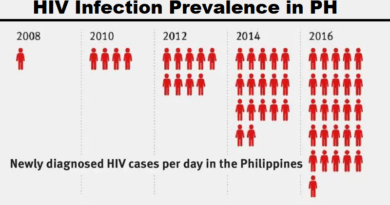Men’s Health: Interesting Facts & Health & Comprehensive Overview
Men’s health is a broad topic that encompasses a variety of physical, mental, and emotional well-being factors. Despite growing awareness, many men still neglect regular health check-ups, preventative measures, and mental health care. Understanding men’s health is essential for living longer and improving the quality of life at every stage. In this blog, we’ll explore some intriguing and little-known facts about men’s health, touching on physical conditions, psychological well-being, and lifestyle factors that play significant roles in overall health.
1- Heart Disease is the Leading Cause of Death in Men
One of the most startling statistics in men’s health is the prevalence of heart disease. According to the Centers for Disease Control and Prevention (CDC), heart disease is the leading cause of death for men in the United States, accounting for about one in four deaths. Heart attacks and other cardiovascular conditions are often silent killers, with many men unaware they have heart problems until it’s too late.
Factors like high blood pressure, high cholesterol, smoking, and an inactive lifestyle are significant contributors to heart disease in men. Fortunately, many of these risks can be mitigated through regular exercise, a healthy diet, and lifestyle changes like quitting smoking or reducing alcohol intake.
2- Men Are Less Likely to Visit Doctors for Regular Check-ups
Men tend to avoid regular health check-ups more often than women, leading to undiagnosed conditions that could otherwise be caught early. Studies suggest that men are 24% less likely than women to have visited a doctor within the past year. This reluctance is often linked to cultural and psychological factors, where men are conditioned to believe that seeking help is a sign of weakness.
Regular screenings and medical visits are vital for catching conditions like prostate cancer, diabetes, and heart disease before they become severe. Health care providers recommend routine screenings for men, especially after the age of 40, to keep tabs on blood pressure, cholesterol levels, and other potential health risks.
3- Prostate Cancer is the Second Most Common Cancer in Men
Prostate cancer is one of the most prevalent cancers affecting men, particularly older men. The American Cancer Society estimates that one in eight men will be diagnosed with prostate cancer at some point in their lifetime. This condition primarily affects men over the age of 65, although younger men can also be at risk, especially if there is a family history of the disease.
Early detection of prostate cancer through screenings like the PSA (prostate-specific antigen) test can dramatically improve outcomes. Unfortunately, many men delay or avoid testing out of fear or discomfort, underscoring the importance of regular check-ups.
4- Men’s Mental Health Disorders are Underreported Among Men
Mental health issues like depression and anxiety are often underreported in men. Social stigma and cultural expectations around masculinity can make it difficult for men to openly discuss their emotions or seek help for mental health conditions. Men are four times more likely to die by suicide than women, with depression being a leading cause. However, fewer men seek mental health treatment compared to women.
It’s essential to break down the barriers of stigma surrounding mental health and encourage open dialogue. Many mental health professionals and organizations are working to create environments where men feel safe discussing their mental well-being and seeking treatment when needed.
5- Men’s Life Expectancy is Lower Than Women’s
Globally, men have a lower life expectancy than women. On average, men live about five years less than women, although this gap varies by country. Several factors contribute to this disparity, including lifestyle choices, biological differences, and the tendency for men to avoid medical care.
One significant factor is that men are more likely to engage in risky behaviors, such as smoking, excessive drinking, and neglecting their health. Additionally, men are more prone to occupational hazards due to working in dangerous industries like construction and mining.
Addressing these behaviors and encouraging healthier lifestyle choices from an early age could help narrow the life expectancy gap between men and women.
6- Men Are More Prone to Certain Types of Cancers
While men and women can develop many of the same types of cancers, men are more susceptible to certain forms. For example, testicular cancer is the most common cancer in young men between the ages of 15 and 35. However, it’s highly treatable, especially when caught early. Men should be aware of the signs and symptoms of testicular cancer, including lumps or swelling in the testicles, and perform regular self-exams.
Additionally, men are more likely to develop cancers linked to lifestyle factors such as smoking and heavy drinking. Lung cancer and liver cancer are particularly prevalent in men, and both are strongly associated with smoking and alcohol use. Quitting smoking and reducing alcohol consumption can significantly lower the risk of these cancers.
7- Men Are More Likely to Have High Blood Pressure
High blood pressure, or hypertension, is more common in men under the age of 45 than in women. This condition often goes unnoticed until it leads to more severe problems like heart disease, stroke, or kidney failure. Regular monitoring of blood pressure, especially as men age, is crucial for maintaining cardiovascular health.
Interestingly, after the age of 65, women tend to catch up with men in terms of high blood pressure rates. Nevertheless, men should pay close attention to their cardiovascular health throughout their lives, as hypertension is a silent but significant risk factor for many life-threatening conditions.
8- Testosterone Declines With Age
As men age, their testosterone levels naturally decline. This decrease in testosterone, often referred to as andropause, can lead to symptoms such as fatigue, depression, reduced muscle mass, and decreased libido. While this is a normal part of aging, some men experience a more pronounced drop in testosterone, which may affect their overall quality of life.
Hormone replacement therapy is an option for some men, but it’s important to consult with a healthcare provider to discuss the potential risks and benefits. Maintaining a healthy lifestyle, including regular exercise and a balanced diet, can help mitigate some of the effects of lower testosterone levels.
9- Sleep Apnea is More Common in Men
Sleep apnea is a disorder characterized by repeated interruptions in breathing during sleep. It’s more common in men than women, particularly those who are overweight or obese. Sleep apnea can lead to serious health problems, including high blood pressure, heart disease, and diabetes.
Men with sleep apnea may experience excessive daytime sleepiness, loud snoring, and difficulty concentrating. Treatment options include lifestyle changes, such as losing weight, as well as the use of devices like CPAP (continuous positive airway pressure) machines to help keep the airway open during sleep.
10- Men’s Health and Sexual Health are Closely Linked
Sexual health is a key component of overall well-being, and it can also be an indicator of underlying health issues. Conditions like erectile dysfunction (ED) are not only a sexual health concern but can also be early warning signs of cardiovascular disease or diabetes.
Men experiencing sexual health problems should not hesitate to consult a healthcare professional. In many cases, addressing the root cause of sexual health issues can lead to improvements in other areas of health as well.
Conclusion
Men’s health is a multifaceted issue that requires attention at every stage of life. By understanding the unique health challenges men face and taking proactive steps toward prevention, men can lead longer, healthier lives. Whether it’s through regular screenings, lifestyle changes, or open discussions about mental health, small actions can lead to significant improvements in men’s overall well-being.




